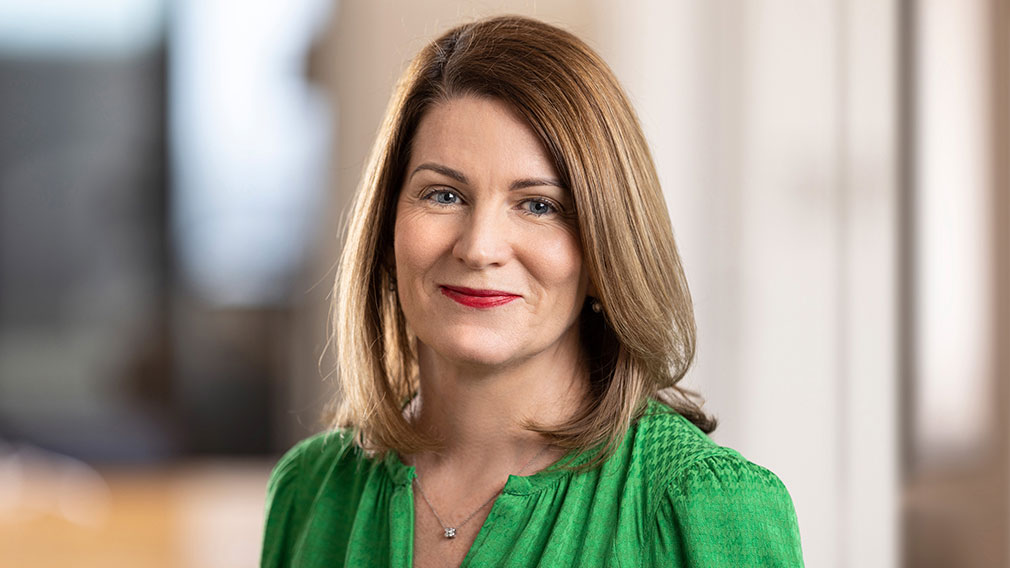Stopping scammers before they scam you

Carolyn McCann, Group Executive, Customer and Corporate Services. (Supplied)
A few weeks ago, a Westpac customer in Queensland sat down to make a large payment through internet banking.
After plenty of thought and research, they’d decided to invest $350,000 in government bonds, a reasonable—and usually—a safe move. The hard-working couple put the account details in, typed in the dollar amount and hit transfer.
Every day at Westpac, our fraud systems analyse around 30 million interactions with our banking services. Using a combination of AI and human intelligence, we’re on the lookout for anything that appears unusual and could indicate a scam.
We’re seeing one scam for every 25,000 payments. It might sound like needle/haystack territory, but we’re actually detecting 69 per cent of all scam attempts and we’ve saved customers around $170 million this year.
Customer losses and scam numbers are down 30 per cent on last year, so we’re making progress. I can’t find another country with a better or quicker improvement than that.
Why is this happening? Because of the many safety features we’ve rolled out to make payments safer.
Which brings me back to our customer in Queensland. What they didn’t realise when they went to transfer their $350,000 was that they’d fallen for a scam. Their life savings were about to disappear. What saved them was Westpac SaferPay.
This technology detects anything about the payment that would indicate a high scam risk. So when the customer hit send, the tech knew there was something unusual and asked a number of questions which made them rethink.
To date we’ve challenged 200,000 transfers resulting in customers abandoning $194 million in payments. Some of these payments would’ve gone to scammers.
Another feature, Westpac Verify, provides a confirmation of payee function. When you put new BSB and account details in to make a payment, this system will tell you if the account name doesn’t match the account you’ve entered.
As a result, business email compromise scams are down significantly and we are stopping 300 mistaken payments every day.
Where does the money go?
We know that as a major bank entrusted to protect our customers’ money, we have a huge role to play in combating scams.
And we know we have more work to do.
This applies also when customers of other banks are tricked into transferring their money into Westpac accounts. Often called “mule accounts”, these aren’t just set up with stolen identities.
Some scam-receiving accounts are old accounts which were set up legitimately then illegally sold by customers to scammers overseas.
Other Westpac customers are sometimes convinced by scam syndicates to let their account be used to receive funds, in return for a percentage of the money.
We’re tackling all three. We’ve increased transaction surveillance on incoming payments. We’re cooperating faster with other banks. And we’re using facial biometrics when people open a new account to make sure they are who they claim.
Often scammed money disappears within minutes to crypto exchanges, so we’ve also blocked the high risk ones, which has seen losses to crypto exchanges fall by 70 per cent.
Who should repay?
There’s been much debate around who should repay customers who fall victim to scams.
In the UK – banks will soon be required to reimburse customers for scam losses and a voluntary scheme is already underway.
Unfortunately, as a result, a criminal scams industry is flourishing.
While dollar losses are down 5 per cent in the UK, they’re falling faster here in Australia. And scam numbers in the UK have actually increased 12 per cent in the past year alone. This is because instead of chasing a big fish, scam syndicates are looking to broaden their success rate by catching out more customers with smaller scams. It’s a business model.
We’ve noticed that 45 per cent of scam recipient accounts we encounter have some connection to the UK. And it’s probably no coincidence that many Australians who are scammed also report that the voice on the other end of the phone has an English accent.
By guaranteeing reimbursement by the UK banks, you guarantee that the criminals will make a profit. You’re effectively paying their salary and funding their industry. Ultimately, bank customers and shareholders will be left to cover the cost – in other words, virtually every citizen.
Instead, in Australia we need to tackle this problem together, across banks, telcos, social media companies and governments. Which is exactly what we’re doing. When banks get it wrong they should be on the hook, but when telcos and social media giants get it wrong they should be on the hook as well.
Our recent SafeCall partnership with Optus demonstrates this collaborative effort –providing Westpac customers with the security that when we call, it’s definitely us on the phone. This is available to all Westpac customers, even if they use other telcos.
From social media companies, we need more attention on this issue. That’s where many scams find their victims. I recently wrote to Meta regarding 360 different scams on Facebook which Westpac customers have complained about. We’re ready to work with Meta to get these scams taken down.
Only through a united response and continued investment will we put the criminals out of business and ensure we save many more customers from losing their hard-earned money.


